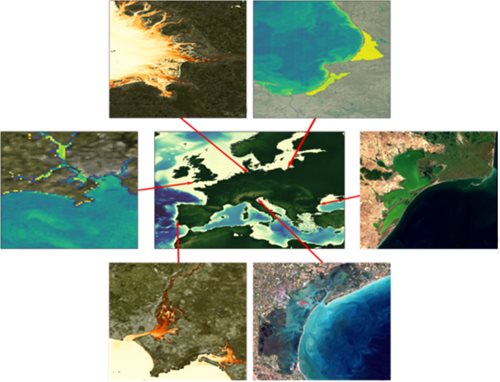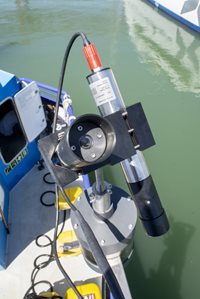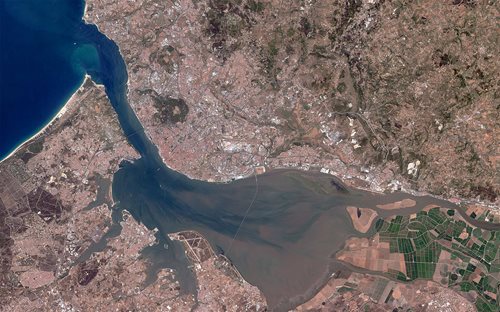Lisboat is helping in the effort of monitoring water quality in the Tejo estuary through a collaboration with researchers at the University of Lisbon. This is part of a larger project called CERTO, which is a European Union project that works in several estuaries across Europe.

CERTO case study sites CERTO is a scientific program that conducts research studying the water quality at each of these sites using sensors on boats and Earth-orbiting satellites.
CERTO is a scientific program that conducts research studying the water quality at each of these sites using sensors on boats and Earth-orbiting satellites.
The equipment on the Lisboat ferry is called a "So-Rad radiometer", and uses three sensors ("TriOs") to measure the light reflected off the water and the incoming sunlight from above.
These measurements are then compared with images taken by satellites as they orbit around the Earth at altitudes of 1000 km.
 Satellite image of the Tejo estuary
Satellite image of the Tejo estuaryBy matching the measurements taken from the So-Rad equipment with the ones taken by the satellite, oceanographers can better understand the conditions of water quality in the Tejo, as well as other entities involved in the monitoring and treatment of these waters.
.jpg?width=300&height=200)
.jpg?width=266&height=200) Installing equipment on the Lisboat ferry and the Tejo (Tagus) estuary.
Installing equipment on the Lisboat ferry and the Tejo (Tagus) estuary.
For further information see the CERTO main website.